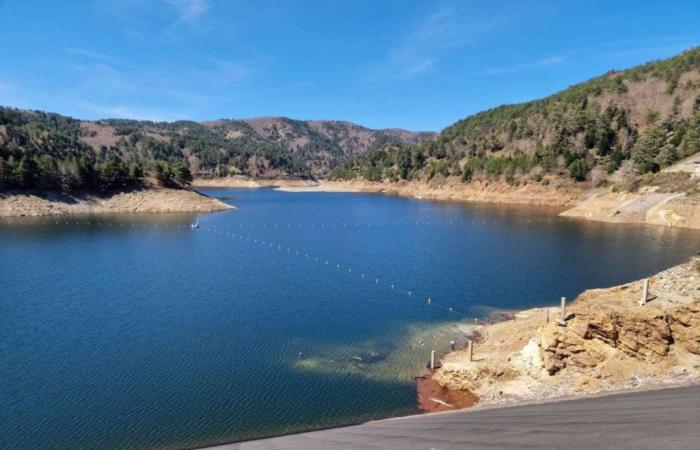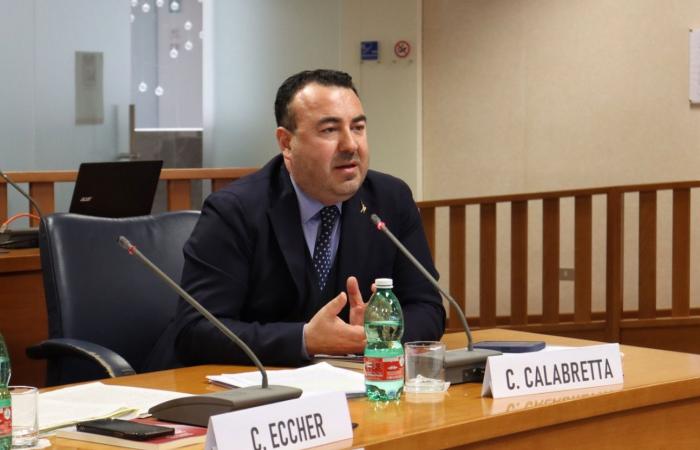“We are in the midst of an emergency and we are trying to mitigate the effects of water shortages. The Mayors continually ask us for more resources, but it is not always available, there are springs that have lost 50% of their flow rates, the Menta dam is at 47% of its filling capacity. With the heat then electrical panels and electric pumps fail, the pipes to carry more water are stressed and break”. The sole director of Sorical, Cataldo Calabrettasummarizes the impact that the drought is having in some areas of Calabriathe Civil Protection and the Prefectures have been alerted and the meetings are different.
“We need to establish rules of civil coexistence – says Calabretta – it is not possible to fill public and private swimming pools with drinking water, it is not possible to waste water for watering the gardens, in a context of drought. On weekends, like every year in June, all the tanks in the coastal towns go haywire due to excessive consumption. If waste is not put to an end and water networks are not addressed, the inconveniences are destined to increase.”
The situation in Reggio Calabria
Sorical presents the picture of the drought that is affecting various areas of the Calabrian territory. There dam of the Mint it has a reservoir volume of 47.7%, compared to its maximum capacity, while last year it was at around 85% and two years ago the reservoir volume was at 92% of maximum capacity. According to data processed by Sorical technicians, it is necessary to reduce withdrawals to guarantee the production of drinking water until next autumn. Remaining in the Reggio area, the Tuccio aqueduct, which supplies the municipalities between Melito Porto Salvo and the southern area of Reggio Calabriarecords -50% production. Significant drops are recorded by Novito sources serving Agnana, Canolo and some fractions of Locri And Siderno; the Hot Water springs it supplies also fell by 30%. Stylus And Bragatono for the city of Gerace. A serious drought is also affecting the city of Palmsthe water balance is missing 35 liters per second with the Vina consortium forced to carry out night closures to allow adequate accumulation of the tanks.
Here Sorical has activated a technical table and, in agreement with Arrical and the Region, some private wells are being requisitioned to deal with the emergency of the coming months. Further south, too Bagnara Calabra It has some sources in crisis, in this case Sorical and municipal offices have already taken action to functionally integrate some aqueduct schemes.
Vibo Valentia
In the province of Vibo, a 40% decline in the Conture spring for Parghelia, Zambrone and Tropea where it is being made up for with wells and bypasses together with other aqueduct schemes. Wells and integrations with water schemes have also been activated for Tropea, Briatico, Filandari and Mileto due to the 20% drop in the Poro aqueduct.
Crotone
The situation in the province of Crotone is also critical. In particular, the Lese scheme, which serves the municipalities of Verzino, Pallagorio, San Nicola dell’Alto, Carfizi, Cirò Superiore, Crucoli, Torretta di Crucoli, Casabona, Belvedere Spinello, Strongoli Superiore, Rocca di Neto on the Crotone side and for the Cosenza side, Campana, Mandatoriccio, Scala Coeli, Pietrapaola, Terravecchia and Cariati. The Tacina scheme – serving the municipalities of Petilia Policastro, Mesoraca, Cutro, Crotone, Roccabernarda, Santa Severina, Altilia, Scandale, San Mauro Marchesato – records a significant reduction in sources and a greater decline is expected in the coming weeks, with the temperature increase. Flow reductions are already being recorded for two other aqueduct schemes: Sila Badiale serving the municipalities of San Giovanni in Fiore, Castelsilano, Caccuri and Cerenzia; Brigante-Pulitrea scheme serving San Giovanni in Fiore and Cotronei, the flow rate reduction is approximately 30 liters per second.
Catanzaro
In the province of Catanzaro, there are declines, currently physiological, in the Posino Montenero springs for the municipalities serving Tiriolo, Gimigliano and others. There is a full emergency in Stalettì, where municipal and regional wells have suffered a sharp drop in production. Tomorrow morning Sorical will start extraordinary maintenance of the Drago well. While in Botricello, the re-efficiency of some wells made it possible to restore the historical flow rates in this period.
Cosenza
Finally, in the province of Cosenza, the Trionto river from which Sorical draws water resources for the purification plant is also in water shortage this year. Production dropped from over 100 liters per second to 50 l/s. The Mucone wells were activated to make up for the shortage and ensure resources for Acri, the Albanian towns, Bisignano, Rose and Luzzi. The Ferrera, Vurghe and Cuccari aqueducts which supply the municipalities between Fuscaldo, Paola, San Lucido and up to Amantea are in decline. The Savuto aqueduct which serves the municipalities south of the province of Cosenza and the historic centers of Lamezia, Nocera, Falerna and Gizzeria also shows a negative figure for the production of drinking water.
At the moment only the aqueducts of the Upper Tyrrhenian Cosentino and the Pollino area are holding up to the impact of the great heat.
The measures that the Sorical technicians suggest to the municipal technicians, for the purposes of a uniform and fair distribution of the deficit also within the distribution networks:
• the planning of the probable systematic closure of the outlets from the tanks, probably at night, aimed at filling the tanks for subsequent daytime use;
• the preservation of the possibility of subdividing the distribution networks using hydraulic devices, also with the aim of limiting the frequent phenomenon of emptying of the portions of the network located at higher altitudes;
• guarantee adequate information to the populations involved, also aimed at containing consumption.
On this last point, Sorical has launched an awareness campaign aimed at correct use of the available water resources.
Before the reform of the integrated water service began, Calabria was the only Italian region not to have implemented the “Galli law” and to have around 400 economic managements lapsed since 2014. Despite several warnings from the Government starting from 2015, the Calabrian mayors have shown resistance to change for decades. With the Occhiuto government it was possible to do what others had only announced. Lawyer Cataldo Calabretta guided the company through the complex period of transformation and exit from liquidation. His mission was also to verify whether the conditions existed for Sorical, which until then had only managed regional aqueducts, to be in the economic and legal conditions to receive the in-house assignment of the integrated water service. Operation concluded in October 2022.
Continue reading on StrettoWeb







